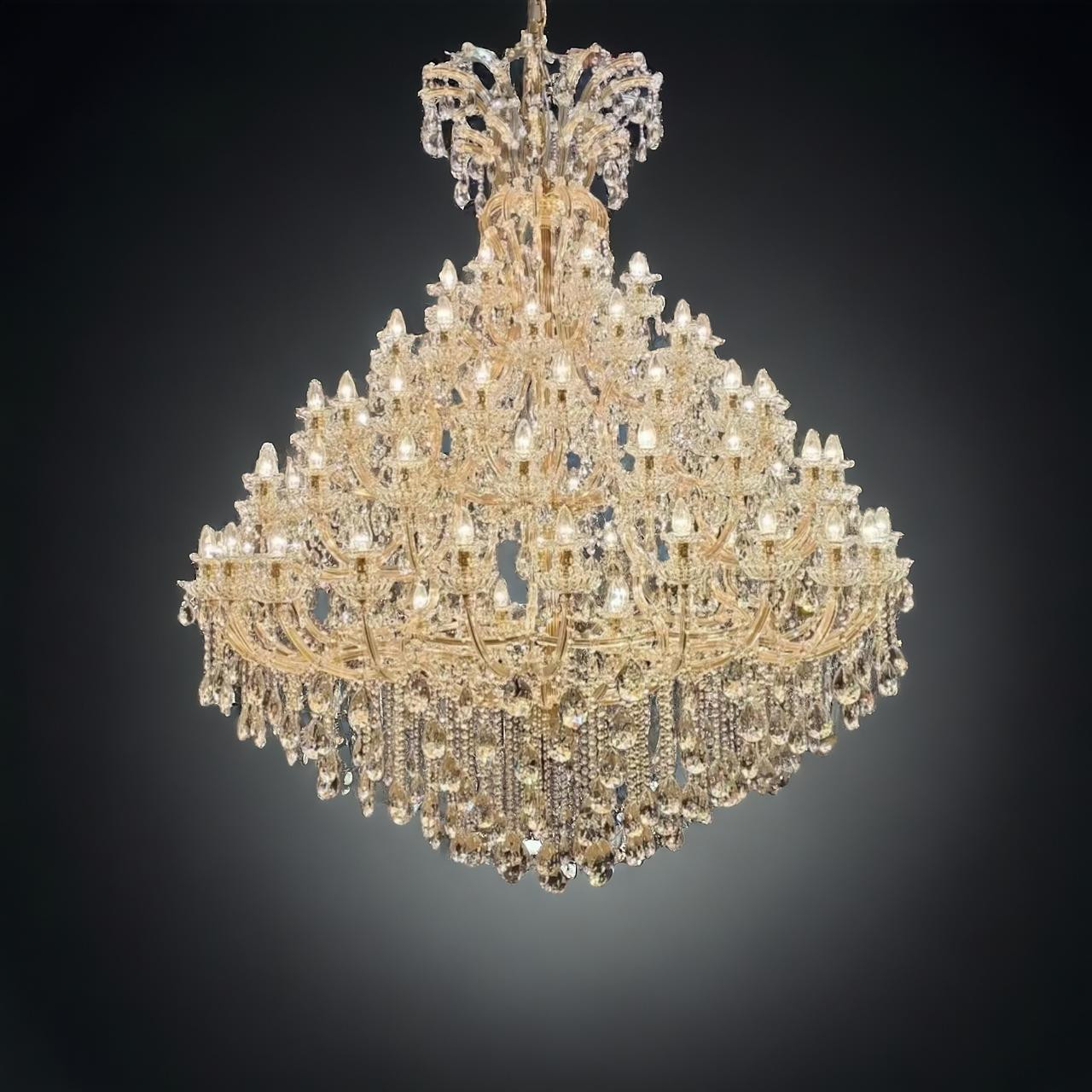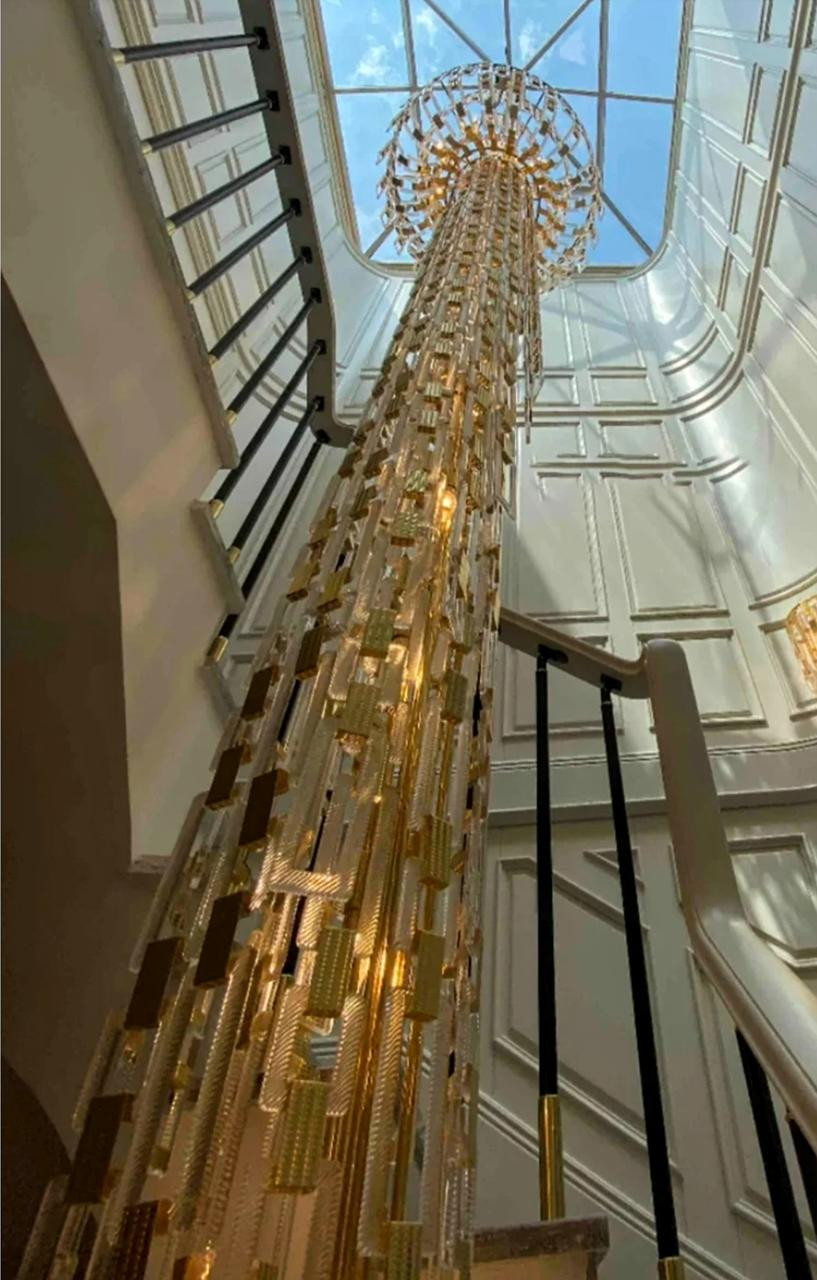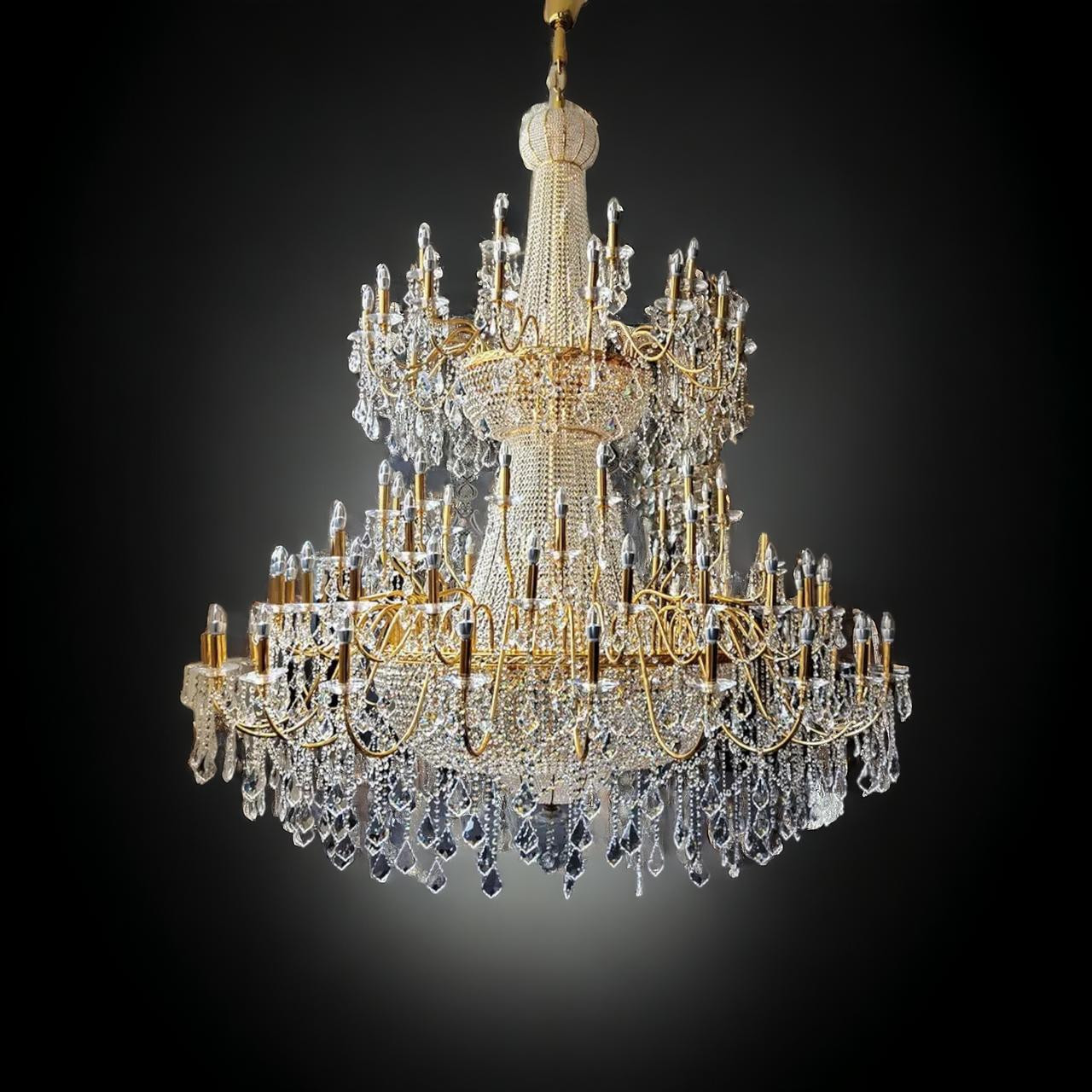Chandelier vs Ceiling Light: Which Is Best for Your Space?
Sep 02, 2024
When designing or renovating a room, one of the most important decisions you'll make is choosing the right lighting. The type of light fixture you select can dramatically impact the ambiance, functionality, and aesthetic appeal of the space. Among the most popular lighting options are chandeliers and ceiling lights, each offering unique benefits and styles. In this blog, we'll explore the differences between chandelier vs ceiling light, helping you decide which is the best option for your needs.
What Is a Chandelier?
A chandelier is a decorative lighting fixture that hangs from the ceiling, typically featuring multiple arms or branches that hold lights. Traditionally associated with luxury and opulence, chandeliers have evolved over time to include a wide variety of styles, from classic crystal designs to modern minimalist pieces. Chandeliers are often used as statement pieces in rooms where a focal point is desired, such as dining rooms, living rooms, or entryways.
Design and Aesthetics
Chandeliers are known for their ability to enhance the visual appeal of a room, often serving as the centerpiece of the space. They come in a variety of materials, including crystal, glass, metal, and even wood, allowing them to complement different interior design styles. Whether you're looking for the elegance of a crystal chandelier or the modern simplicity of a metal fixture, there's likely a chandelier that fits your aesthetic preferences.
Chandeliers can range from highly ornate designs with cascading crystals and intricate metalwork to sleek, contemporary styles with clean lines and minimalistic shapes. This versatility makes chandeliers a popular choice for homeowners who want to make a bold design statement with their lighting.
Functionality and Light Output
Chandeliers are primarily used for ambient lighting, providing general illumination to a room. They are especially effective in spaces with high ceilings, where their hanging structure allows light to be distributed evenly. However, because chandeliers often emit light from a central location, they may not always provide sufficient task lighting for activities like reading or cooking.
To compensate for this, chandeliers are often paired with additional lighting sources, such as wall sconces, table lamps, or floor lamps, to ensure the entire room is well-lit. The light output of a chandelier can vary depending on the number of bulbs, the size of the fixture, and the type of shades used.
Installation and Maintenance
Installing a chandelier requires careful consideration of the appropriate height and placement within the room. For example, in a dining room, a chandelier should typically hang 30 to 36 inches above the dining table. The installation process can be more complex than that of other ceiling lights, often requiring professional assistance, especially for larger or more intricate fixtures.
Maintenance for chandeliers can also be more demanding, particularly for those with multiple crystals or delicate components. Regular dusting and occasional cleaning are necessary to keep a chandelier looking its best. In some cases, professional cleaning services may be required to maintain the fixture's appearance and functionality.
Cost Considerations
Chandeliers can range in price from affordable to very expensive, depending on factors such as materials, size, and design complexity. High-end crystal chandeliers, for instance, can be quite costly, while simpler metal or glass designs may be more budget-friendly. Additionally, installation costs should be factored in, as professional installation may be necessary for larger or more complex fixtures.
What Is a Ceiling Light?
A ceiling light, also known as a flush mount or semi-flush mount light, is a lighting fixture that is mounted directly to the ceiling, typically with a low profile. Ceiling lights are versatile and practical, making them a popular choice for a wide range of spaces, including bedrooms, kitchens, hallways, and bathrooms. They come in various styles, sizes, and finishes, making it easy to find a ceiling light that fits your room's decor.
Design and Aesthetics
Ceiling lights are designed to be unobtrusive, providing functional lighting without drawing too much attention. They are available in a wide variety of designs, from simple, understated fixtures to more decorative options that can add a touch of style to the room. Common materials used in ceiling lights include glass, metal, and plastic, with finishes ranging from matte black to polished chrome.
Flush mount ceiling lights sit directly against the ceiling, making them ideal for rooms with low ceilings or where space is at a premium. Semi-flush mount lights, on the other hand, hang slightly below the ceiling, offering a bit more design flair while still maintaining a relatively low profile.
Functionality and Light Output
Ceiling lights are known for their practicality, providing general illumination that evenly lights a room. Because they are mounted close to the ceiling, they distribute light broadly, making them suitable for smaller rooms or areas where task lighting is important, such as kitchens or bathrooms.
The light output of a ceiling light can be adjusted by selecting the appropriate bulb wattage or using a dimmer switch, allowing you to control the brightness according to your needs. Ceiling lights are also compatible with a variety of bulb types, including LED, CFL, and incandescent, giving you flexibility in terms of energy efficiency and light quality.
Installation and Maintenance
Installing a ceiling light is generally straightforward and can often be done by the homeowner without professional help. The process involves mounting the fixture to the ceiling using screws and connecting it to the existing wiring. Because ceiling lights are typically lightweight and have fewer components than chandeliers, installation is usually quick and easy.
Maintenance for ceiling lights is minimal, with the most common task being bulb replacement. Depending on the design of the fixture, you may also need to occasionally clean the shade or glass cover to remove dust or debris. LED bulbs, which are commonly used in ceiling lights, have a long lifespan, reducing the frequency of bulb replacements.
Cost Considerations
Ceiling lights are generally more affordable than chandeliers, making them an attractive option for budget-conscious homeowners. The price of a ceiling light can vary depending on the materials, design, and brand, but they are typically less expensive than chandeliers. Additionally, because installation is usually simpler, you may save on installation costs as well.
Chandelier vs Ceiling Light: A Side-by-Side Comparison
Now that we've explored the individual characteristics of chandeliers and ceiling lights, let's compare them directly in several key areas:
1. Design and Aesthetics
- Chandelier: Chandeliers are statement pieces that add elegance and visual interest to a room. They come in a wide variety of styles, from traditional to modern, and can serve as a focal point in the space.
- Ceiling Light: Ceiling lights are more understated and functional, providing practical illumination without being the center of attention. They are available in various designs, but generally have a simpler, more minimalist appearance.
Winner: If you want a decorative focal point, a chandelier is the better choice. For a subtle, functional fixture, a ceiling light is ideal.
2. Functionality and Light Output
- Chandelier: Chandeliers provide ambient lighting and can create a warm, inviting atmosphere. However, they may need to be supplemented with additional light sources for adequate task lighting.
- Ceiling Light: Ceiling lights are versatile and provide even, general illumination. They are ideal for smaller rooms or areas where task lighting is important.
Winner: Ceiling lights offer more versatility and are better suited for providing consistent, functional lighting.
3. Installation and Maintenance
- Chandelier: Installing a chandelier can be more complex and may require professional assistance. Maintenance is also more involved, particularly for intricate designs.
- Ceiling Light: Ceiling lights are generally easy to install and maintain, making them a convenient option for most homeowners.
Winner: Ceiling lights are easier to install and maintain, making them more practical for everyday use.
4. Cost Considerations
- Chandelier: Chandeliers can be expensive, especially high-end designs made from materials like crystal. Installation costs can also add to the overall expense.
- Ceiling Light: Ceiling lights are typically more affordable and easier to install, making them a cost-effective choice for most spaces.
Winner: Ceiling lights are generally more budget-friendly, both in terms of purchase price and installation costs.
Conclusion: Which Lighting Option Is Right for You?
The choice between chandelier vs ceiling light ultimately depends on your personal style, the function of the space, and your budget. If you're looking to make a bold design statement and add a touch of elegance to your room, a chandelier is the way to go. Its wide range of styles and materials allows you to find a fixture that perfectly complements your decor.
On the other hand, if you need a practical, functional light fixture that provides even illumination without drawing too much attention, a ceiling light is the better option. Ceiling lights are versatile, easy to install, and more affordable, making them suitable for a variety of rooms and purposes.
Both chandeliers and ceiling lights have their own unique advantages, so the decision ultimately comes down to your specific needs and preferences. By considering the factors outlined in this blog, you can choose the lighting option that best enhances the beauty and functionality of your space.




